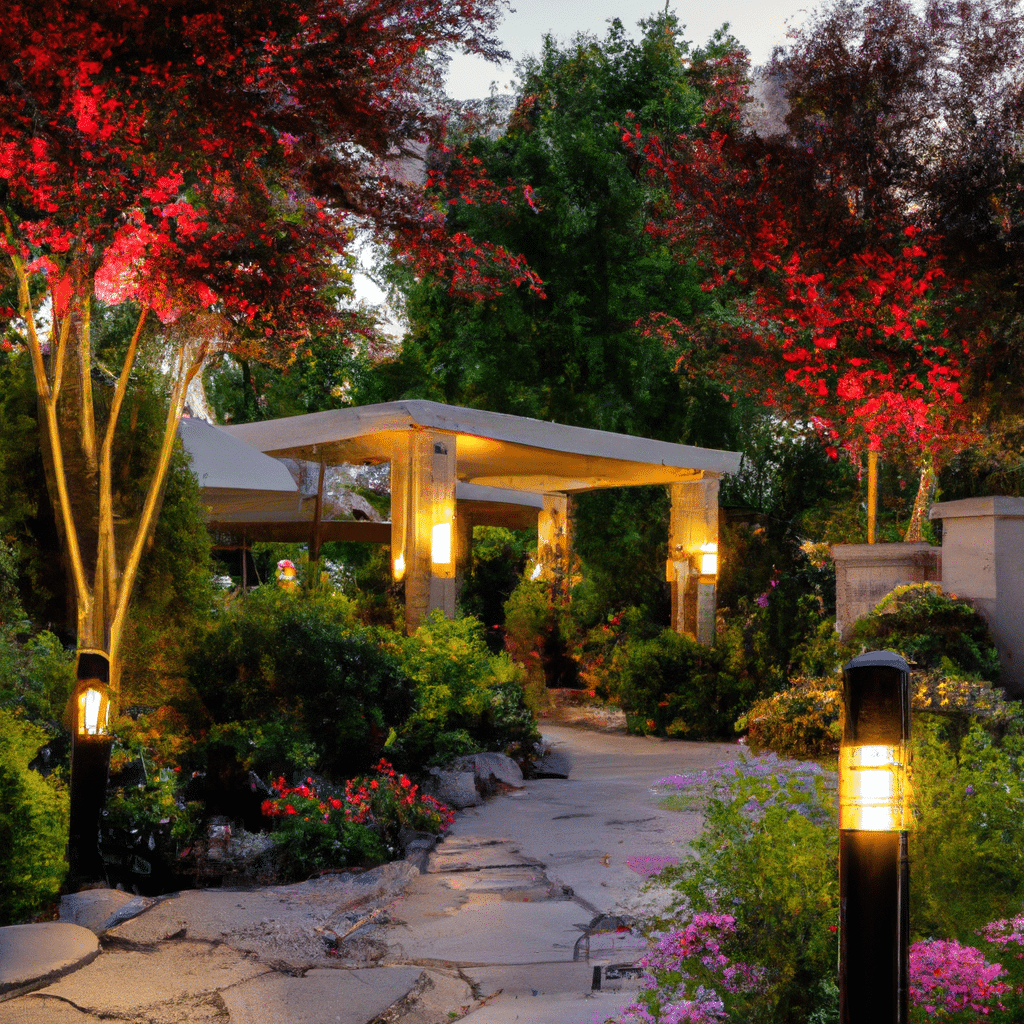Are you looking to transform your outdoor pathways into safe and stunning walkways? If so, you’ve come to the right place. In this comprehensive guide, we will provide you with expert tips on how to illuminate your outdoor pathways like a pro. With our insights, you’ll be able to create a visually appealing and safe environment that will leave a lasting impression on your guests.
Why Illuminating Outdoor Pathways is Important
Before we dive into the tips and tricks, let’s first understand why illuminating outdoor pathways is crucial. Well-lit walkways not only enhance the aesthetics of your outdoor space but also serve as a safety measure. Whether you have guests visiting your home or simply want to enjoy a peaceful evening stroll, proper lighting ensures that you can navigate your pathways with ease and confidence. By investing in the right lighting solutions, you can create a warm and inviting atmosphere that enhances the overall appeal of your property.
Assessing Your Pathway Lighting Needs
Before you begin planning your pathway lighting, it’s essential to assess your specific needs. Consider the layout and size of your outdoor pathways, as well as any potential hazards or obstacles that may require additional lighting. Take into account the style and theme of your outdoor space to ensure that the lighting design aligns with your overall aesthetic goals.
Choosing the Right Lighting Fixtures
Now that you have assessed your pathway lighting needs, it’s time to choose the right lighting fixtures. There are various options available, each with its own unique features and benefits. Here are a few popular choices:
1. Solar-Powered Lights
Solar-powered lights are an eco-friendly and cost-effective option for illuminating your outdoor pathways. These lights harness energy from the sun during the day and automatically turn on at dusk. They require minimal maintenance and are easy to install, making them a popular choice among homeowners.
2. LED Lights
LED lights are known for their energy efficiency and longevity. They produce bright and focused illumination, making them ideal for highlighting specific areas of your pathway. LED lights come in a variety of styles, including stake lights, wall-mounted lights, and post lights, allowing you to create a customized lighting design.
3. Low-Voltage Lights
Low-voltage lights are another popular choice for pathway lighting. These lights operate on a 12-volt power supply and provide a soft and subtle glow. They are easy to install and offer flexibility in terms of placement and design. Low-voltage lights also come in a range of styles, allowing you to find the perfect fit for your outdoor space.
Placement and Spacing
Proper placement and spacing of your pathway lights are key to achieving an aesthetically pleasing and functional lighting design. Here are some guidelines to keep in mind:
1. Evenly Spaced Lighting
To ensure consistent illumination, space your lights evenly along the pathway. This will create a balanced and visually appealing look while providing sufficient lighting for safe navigation.
2. Highlighting Key Areas
Consider highlighting key areas along your pathway, such as steps, turns, or points of interest. This not only adds visual interest but also helps guide your guests and prevents accidents.
3. Avoiding Glare
Be mindful of glare when placing your lights. Position them in a way that avoids direct eye contact and ensures a comfortable viewing experience. This can be achieved by angling the lights downward or using fixtures with built-in glare shields.
Creating Ambiance with Lighting Techniques
Now that you have your lighting fixtures in place, it’s time to explore different lighting techniques to create the desired ambiance for your outdoor pathways. Here are a few techniques to consider:
1. Layered Lighting
Layered lighting involves using multiple light sources to create depth and visual interest. Combine pathway lights with uplights or downlights to highlight architectural features or surrounding foliage. This technique adds dimension to your outdoor space and enhances the overall ambiance.
2. Silhouetting
Silhouetting is a technique that involves placing lights behind objects or structures to create dramatic silhouettes. Use silhouetting to highlight trees, shrubs, or other decorative elements along your pathway. This adds a touch of intrigue and creates a captivating visual experience.
3. Moonlighting
Moonlighting is a technique that mimics the soft, diffused light of the moon. Place lights high up in trees or on elevated structures to cast a gentle downward glow. This technique creates a serene and enchanting atmosphere, perfect for nighttime strolls.
Maintenance and Safety Tips
To ensure the longevity and safety of your pathway lighting, here are a few maintenance and safety tips to keep in mind:
1. Regular Cleaning
Regularly clean your lighting fixtures to remove dirt, debris, and any potential obstructions. This will help maintain optimal performance and prevent any issues caused by dirt buildup.
2. Check for Damage
Periodically inspect your lights for any signs of damage or wear. Replace any bulbs or fixtures that are not functioning properly to ensure consistent illumination.
3. Secure Wiring
Ensure that all wiring is properly secured and protected from the elements. Loose or exposed wiring can pose a safety hazard and should be addressed immediately.
Conclusion
By following these expert tips, you can illuminate your outdoor pathways like a pro, creating a safe and stunning environment for your guests. Remember to assess your specific needs, choose the right lighting fixtures, and carefully plan the placement and spacing. Be creative with your lighting techniques to add ambiance and visual interest. Lastly, prioritize regular maintenance to ensure the longevity and safety of your pathway lighting. With these insights, you’ll be well on your way to transforming your outdoor pathways into a captivating and inviting space.



